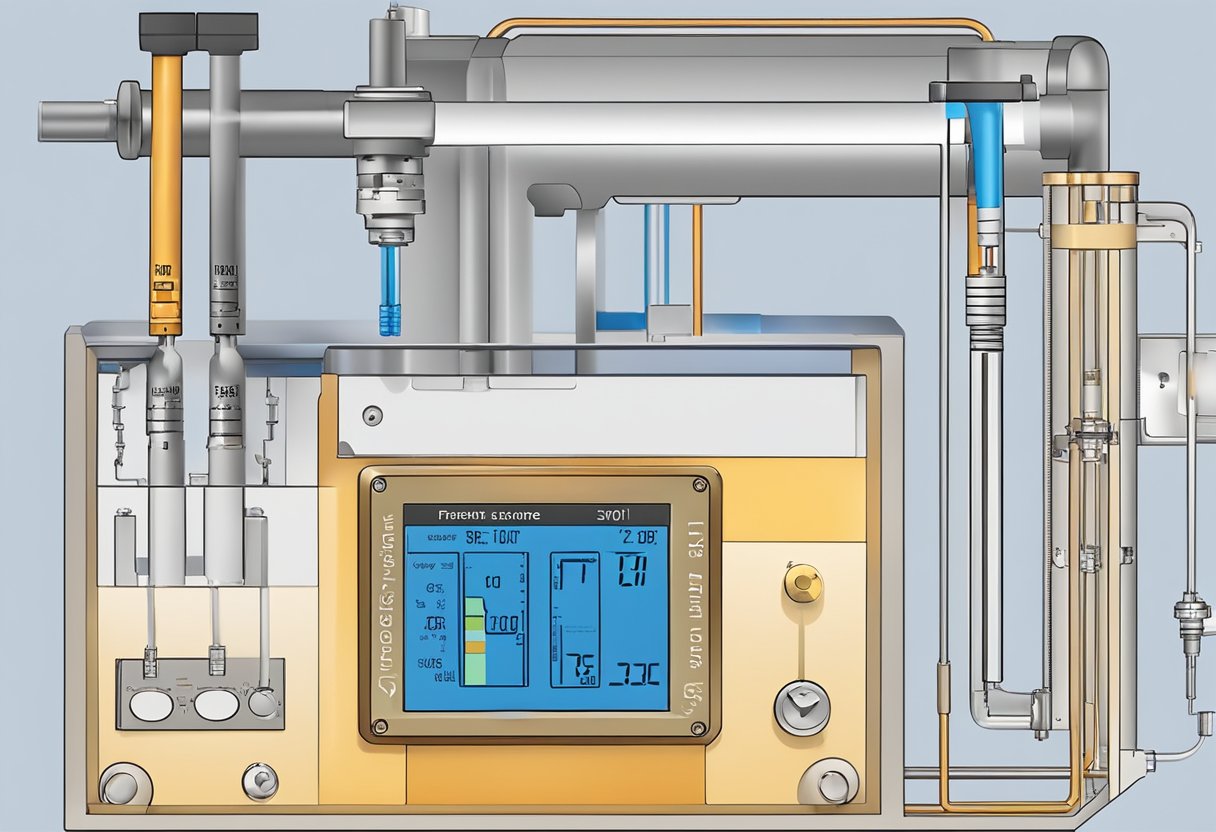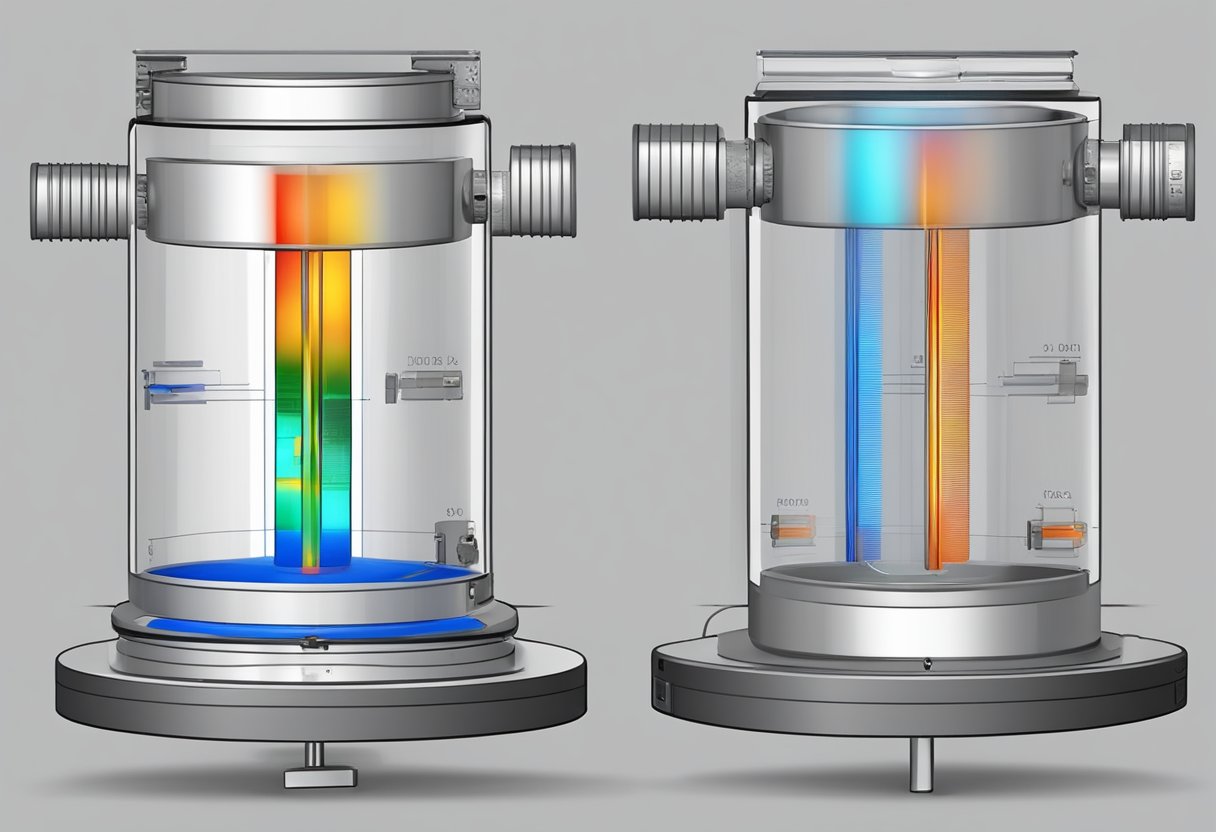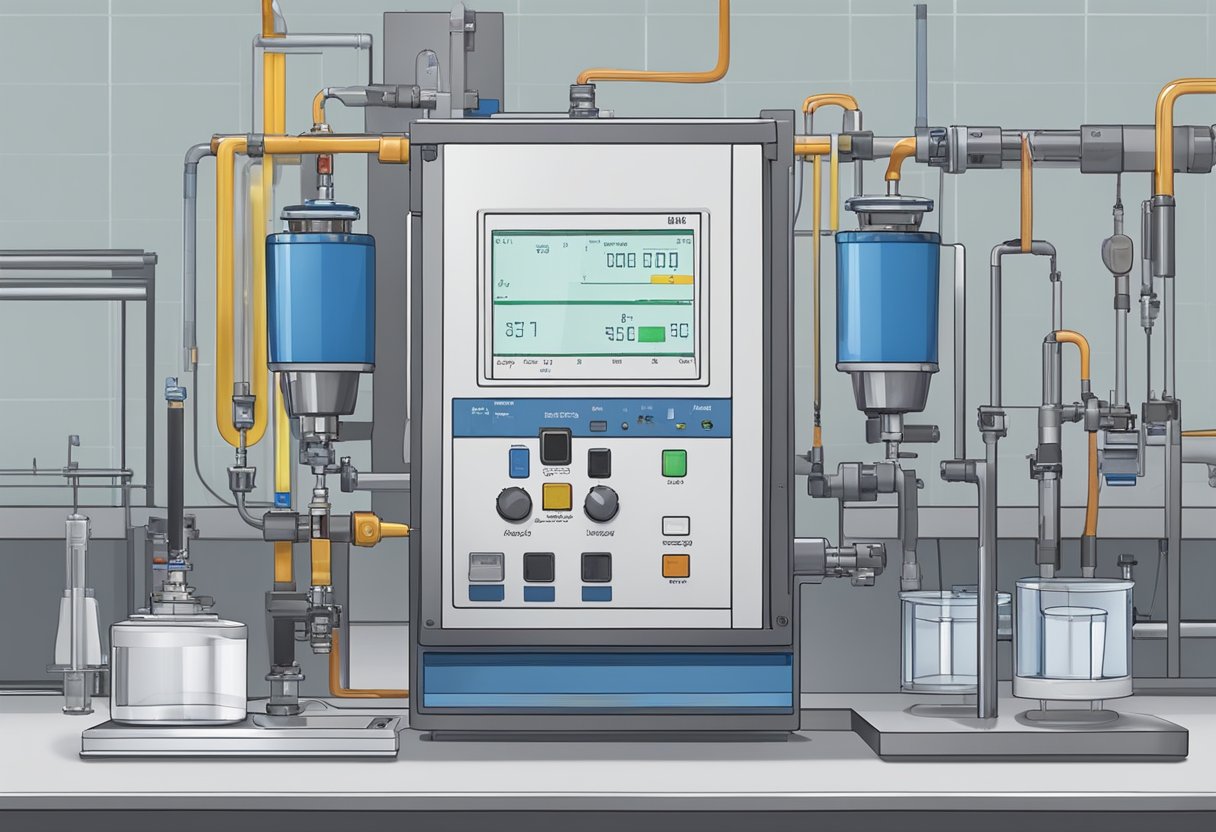Heat Flow Meter Method: A Comprehensive Guide
The Heat Flow Meter Method is a thermal analysis technique used to determine the thermal conductivity and thermal transmittance (U-value) of a material. It is a steady-state test that measures the rate of heat flow through a material under controlled temperature conditions. The method is widely used in the construction and insulation industries to evaluate the thermal performance of building materials, including insulation products, packaging, and assemblies.

The principles of the Heat Flow Meter Method are based on Fourier’s law of heat conduction, which states that the rate of heat flow through a material is proportional to the temperature difference across the material and the cross-sectional area of the material. The Heat Flow Meter Apparatus consists of two parallel plates, one heated and one cooled, with a sample of known thickness and area sandwiched between them. The temperature difference across the sample is measured using thermocouples, and the rate of heat flow is determined using a heat flow meter.
Key Takeaways
- The Heat Flow Meter Method is a thermal analysis technique used to determine the thermal conductivity and thermal transmittance of a material.
- The method is based on Fourier’s law of heat conduction and uses a Heat Flow Meter Apparatus to measure the rate of heat flow through a material under controlled temperature conditions.
- The Heat Flow Meter Method is widely used in the construction and insulation industries to evaluate the thermal performance of building materials, including insulation products, packaging, and assemblies.
Principles of Heat Flow Meter Method

The Heat Flow Meter (HFM) method is a technique used to determine the thermal conductivity of a material. It measures the rate of heat flow through a material of known thickness and temperature difference. The HFM method is a comparative method and thus has some uncertainties, but it delivers accurate values for the thermal conductivity much faster than other methods like the Guarded Heat Plate (GHP) method.
To perform the HFM method, a sample of known thickness is placed between a heated and a cooled plate. The temperature difference is fixed, and the rate of heat flow through the test sample is determined by means of a heat flow meter. The heat flow meter is a plate-shaped measuring device located between the sample and the temperature plates.
The HFM method is based on Fourier’s Law of Heat Conduction, which states that the heat flux (Q) through a material is proportional to the temperature gradient (dT/dx) across the material. Mathematically, this can be expressed as:
Q = -k (dT/dx)
where k is the thermal conductivity of the material.
The HFM method is particularly useful for measuring the thermal conductivity of materials with low thermal conductivity, such as insulating materials. It can also be used to measure the thermal conductivity of liquids and gases.
Overall, the HFM method is a reliable and efficient technique for determining the thermal conductivity of materials. It is widely used in research and industry for a variety of applications, including the development of new insulation materials, the optimization of thermal management systems, and the characterization of materials for electronic and aerospace applications.
Heat Flow Meter Apparatus

The Heat Flow Meter (HFM) apparatus is a reliable and widely used device for determining the thermal conductivity of materials. It is relatively simple in concept and can deliver accurate values for the thermal conductivity much faster than other methods such as Guarded Hot Plate (GHP) measurements.
Sensor Technology
The HFM apparatus consists of two plates, one heated and one cooled, between which a material sample of known thickness is placed. The temperature difference across the sample is fixed, and the rate of heat flow through the sample is determined by a heat flow meter. The heat flow meter is a plate-shaped measuring device that is located between the sample and the cooled plate. It measures the heat flow rate through the sample and provides a measure of the thermal conductivity of the material.
The sensor technology used in the HFM apparatus is based on the Seebeck effect. The heat flow meter contains two thermocouples, one at the hot side and one at the cold side. When a temperature difference is applied across the thermocouples, a voltage is generated that is proportional to the heat flow rate. The voltage is then amplified and processed to provide a measure of the thermal conductivity of the material.
Calibration Procedures
Calibration is an essential step in using the HFM apparatus to ensure accurate and reliable measurements. The calibration procedure involves measuring the thermal conductivity of a reference material of known thermal conductivity. The reference material has been measured by an absolute method, and its values are recorded. The HFM apparatus is then calibrated by measuring the thermal conductivity of the reference material using the HFM apparatus and comparing the results with the known values.
The calibration procedure also includes checking the accuracy and precision of the heat flow meter and ensuring that the heat flow meter is correctly positioned between the sample and the cooled plate. The calibration procedure should be performed regularly to ensure that the HFM apparatus is operating correctly and providing accurate measurements.
In summary, the HFM apparatus is a reliable and widely used device for determining the thermal conductivity of materials. It uses sensor technology based on the Seebeck effect and requires calibration procedures to ensure accurate and reliable measurements.
Test Sample Preparation
When preparing your test sample for the Heat Flow Meter Method, there are a few important steps to follow. These include material handling and sample conditioning.
Material Handling
Firstly, it is important to handle your test sample with care to avoid any damage or contamination. This is especially important for samples that are sensitive to moisture or temperature changes. You should wear gloves and use clean tools to handle your sample to avoid any contamination.
Sample Conditioning
Before testing your sample, it is important to condition it to a stable temperature. This can be achieved by placing the sample in a controlled environment for a period of time until it reaches thermal equilibrium. The temperature and duration of conditioning will depend on the specific properties of your sample.
Once your sample has reached thermal equilibrium, it should be cut to the appropriate size and shape for testing. The dimensions of the sample will depend on the specific requirements of your testing apparatus.
It is important to note that the accuracy of your test results will depend on the quality of your sample preparation. Taking care to handle and condition your sample properly will help to ensure accurate and reliable results.
Measurement Procedure
Test Execution
To conduct a Heat Flow Meter (HFM) test, you will need to prepare the sample material and the HFM apparatus. The sample material should be cut into a rectangular shape with a thickness of at least 10 mm. The HFM apparatus consists of two plates, one heated and one cooled, with the sample sandwiched in between. The plates should be cleaned and leveled before the test.
To begin the test, place the sample material between the plates of the HFM apparatus. Ensure that the sample is centered and that there are no air gaps between the sample and the plates. Then, turn on the HFM apparatus and wait until the temperature stabilizes. The test should be conducted under steady-state conditions, which means that the temperature should remain constant throughout the test.
Data Acquisition
During the test, the HFM apparatus measures the heat flow through the sample material. The heat flow is calculated based on the temperature difference between the heated and cooled plates, the thermal conductivity of the plates, and the thickness of the sample material. The HFM apparatus also measures the temperature at various points on the plates and the sample material.
The data collected during the test is used to calculate the thermal conductivity of the sample material. The thermal conductivity is a measure of how well the material conducts heat. It is expressed in units of watts per meter per Kelvin (W/mK).
After the test is complete, the data is analyzed to determine the thermal conductivity of the sample material. The thermal conductivity can be affected by various factors, such as the temperature, the pressure, and the moisture content of the sample material. Therefore, it is important to ensure that the test conditions are controlled and consistent.
Data Analysis and Interpretation
Thermal Conductivity Calculation
After conducting a heat flow meter test, you can calculate the thermal conductivity of the tested material. The heat flow meter measures the heat flow rate through the material, and you can use this value to calculate the thermal conductivity. The thermal conductivity is calculated using the following formula:
λ = Q / (A x ΔT x t)
Where:
- λ is the thermal conductivity in W/mK
- Q is the heat flow rate in W
- A is the area of the sample in m2
- ΔT is the temperature difference across the sample in K
- t is the thickness of the sample in m
You can use this formula to calculate the thermal conductivity of each sample tested. Make sure to record the values for Q, A, ΔT, and t accurately to ensure the correct calculation of thermal conductivity.
Result Reporting
Once you have calculated the thermal conductivity of each sample, you can report the results. It is common to report the thermal conductivity values as an average of multiple measurements. You can also report the standard deviation to indicate the variability of the measurements.
In addition to reporting the thermal conductivity values, it is important to report the conditions under which the measurements were taken. This includes the temperature and humidity of the testing environment, the type of heat flow meter used, and any other relevant details.
When reporting the results, you can use tables or graphs to present the data in a clear and concise manner. Make sure to label all axes and provide a legend if necessary. You can also use bold or italic formatting to highlight important values or trends.
Overall, accurate data analysis and interpretation are crucial for obtaining meaningful results from heat flow meter tests. By following the correct procedures and reporting the results clearly, you can ensure that your findings are reliable and useful for further research.
Applications and Limitations
The Heat Flow Meter Method is a reliable and widely used technique for measuring the thermal conductivity and thermal transmittance (U-value) of materials with low thermal conductivity, such as insulation materials. The method involves placing the sample between two plates, one heated and one cooled, and applying a temperature gradient to the sample. The heat flow through the sample is then measured and used to calculate its thermal conductivity and U-value.
This method has numerous applications in various industries, including building construction, aerospace, and automotive. In building construction, it is used to determine the energy efficiency of insulation materials and building components, such as walls, roofs, and windows. In aerospace and automotive industries, it is used to evaluate the thermal performance of materials used in the design of spacecraft and vehicles.
However, there are some limitations to the Heat Flow Meter Method. The maximum temperature limit for this method is approximately 200°C, which may not be sufficient for some high-temperature applications. Additionally, the method requires a flat and uniform sample with a thickness of less than 50 mm, which may not be suitable for all materials. Moreover, the method is time-consuming and requires specialized equipment, which may not be readily available in some laboratories.
Despite its limitations, the Heat Flow Meter Method remains a valuable tool for measuring the thermal conductivity and U-value of materials with low thermal conductivity. Its accuracy and reliability make it a popular choice for evaluating the thermal performance of insulation materials and building components.
In summary, the Heat Flow Meter Method is a widely used and reliable technique for measuring thermal conductivity and U-value of materials with low thermal conductivity. It has numerous applications in various industries, including building construction, aerospace, and automotive. However, it has some limitations, such as a maximum temperature limit of 200°C, requirement of a flat and uniform sample, and specialized equipment.






































